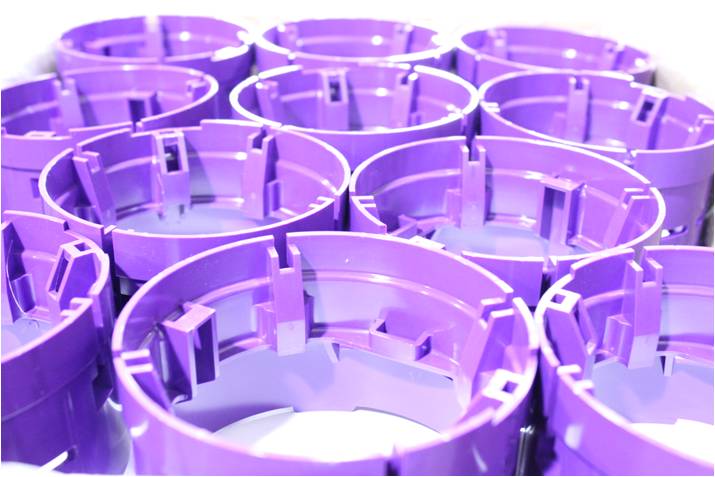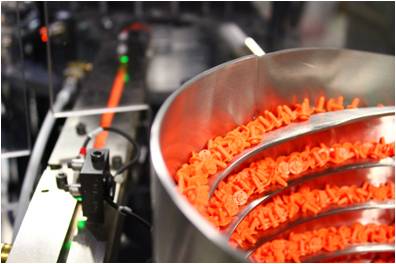
Five Tips to Help You with Material Selection
Key Considerations Before You Select Material for Your Plastic Part
One of the hidden sources of uncertainty in the process of developing injection molded plastic components is material selection. Sometimes selecting the right material can feel like a mystery with no end. On the more challenging applications, the design and development team can start to wonder, “Is this even possible?” The right question might be, “Have we just not found the right resin?” Understanding the material selection process as well as the risks inherent in the process can help alleviate some headaches and heartaches along the way.
The selection process usually starts with a list of options based upon prior experience and the known material properties relative to the demands of the application. Generally, basic properties are first considered such as tensile strength, clarity, temperature and chemical resistance, etc. This can present a list of material options, which can be further narrowed to specific material grades and manufacturers.
Steps to Material Selection
- Review Material Availability
- Question Long Term Costs
- Generalize Requirements
- Consider Processing Risks
- Consider Custom Material Blends
Need help selecting the best plastic for your product? Download our material selection and material science tip sheets to reduce uncertainty.
Tip #1: Aim for Greater Availability
Once the performance requirements are established, the material availability should be considered with a bias toward greater availability as feasible. Small quantities might be readily available for R&D activities, so any major red flags might not emerge during development, but that does not guarantee production quantities will not have long lead times. This is an important question to ask, and not one that comes to mind when everyone is in a state of relief that they finally found something that works. Availability is a risk, so add it to the checklist for selecting materials and backups.

And be sure to review material availability regularly because availability can change over time. If a backup material has not been ordered for years, and it is suddenly needed, it might not be as available as it once was.
Tip #2: Evaluate Long Term Costs Over Time
Cost is another question worth asking early. Yes, everyone eventually asks the question, but sometimes it doesn’t come up during the development phase when quantities are small and the focus is on urgently finding a solution that just works. If a material works perfectly but is far too expensive to offer a feasible solution, was it worth the effort to test at all or would the resources have been better spent testing more affordable solutions?
Tip #3: Generalize Requirements, Don’t Specify
The selected material should also tend toward generalizing the requirements as possible rather than toward more specific requirements. If the requirements specify both material grade and manufacturer, but the manufacturer discontinues the grade or encounters a disruption in the supply, qualifying a backup can cause expensive delays.
Leaving out the manufacturer allows the sourcing from multiple suppliers as necessary. Specifying a material grade and one or two backup grades is another good way to reduce such risks later. In some instances, specifying the grade is not necessary. When a generic ABS would suffice, specifying the grade can introduce unnecessary delays and expenses.
Tip #4: Consider Ease of Processing
Another thing to remember is that different materials, and even material grades, can have different injection molding process windows for the same part in the same mold. Some materials are more challenging to run, and introduce new processing risks.
With all else being equal tend toward easier-to-process resins. This requires asking the right questions at the right time.
Tip #5: Review Custom Formulations
When the right performance of material cannot be achieved with the available grades of material, bear in mind that creative options are available. Custom blends of different materials can augment the properties of multiple resins. For example, materials can be combined to achieve more varied combinations of durometer, strength, and chemical resistance. Reinforcements such as glass fibers or carbon fibers can be used as fillers to enhance part performance. Additives can be used to improve flow, ejection, and dispersion.

At the end of the day, risk management is about reducing uncertainty. With material selection many of the risk factors have already been identified and alleviated. The development process is a collaboration, so communication is critical. If something breaks down during the development process, communication is a regular culprit. Both client and supplier must be able to talk through the options, tradeoffs, priorities, constraints, and requirements to arrive at the optimal outcome.
Download Material Selection Tip Sheets
Understanding the material selection process will help you select the best high-performance injection-molded plastic for your product. Download Tip Sheets